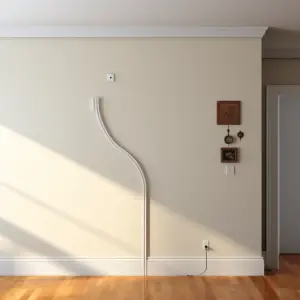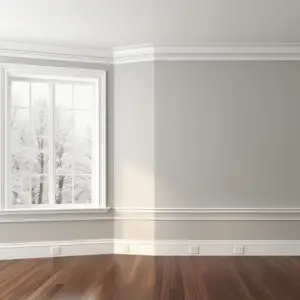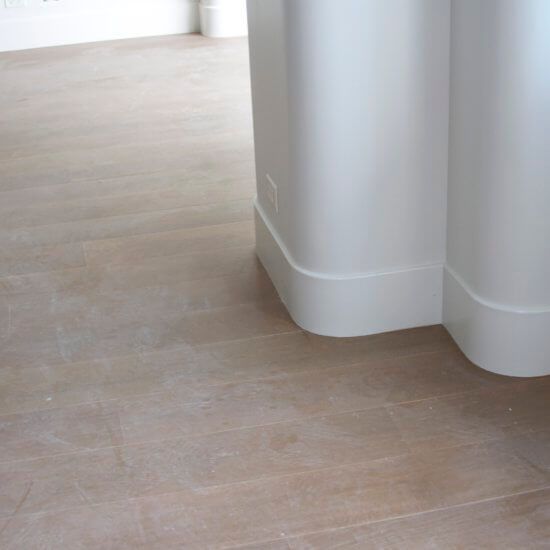Rounded corners are basically known as rounded corners, but they are sometimes referred to as bullnose corners. This is a term that’s mostly used by contractors and more experienced DIYers. So when you hear contractors talking about bullnose, you simply know they’re referring to rounded corners.
There is a question concerning the pros and cons of rounded drywall corners and whether they’re still in style. While that all comes down to individual preferences, there are certain benefits to be had from installing round corners. On the flip side, however, there’re also downsides for those looking to go with this style of drywall.
Given that not everyone wants the same visual aesthetics as every other home in their square, here is what you need to know about rounded drywall corners.
Table of Contents
Advantages of Rounded Drywall Corners

Aesthetics
While some might say that rounded corners are dated, others still find them to be great for an updated, alluring look in any room. Rounded corners have particularly become a common upgrade for modern homes.
Additionally, you can use it to make your rooms stand out and more unique from most other homes. That said, rounded corners are still not as popular compared to their square counterparts with regard to grabbing the attention of guests when they enter.
Durability
Durability is yet another factor to consider regardless of what type of drywall you choose. While standard square corners are usually more prone to fracturing, especially when there’re underlying structure lines, rounded corners on the other hand are considered less susceptible to such chips or fractures.
Nothing is annoying than walking into a room and seeing a huge fracture creeping along the corner of the room. Luckily, that’s not something that rounded corners have to deal with; they simply hold up over time.
Softening the Room
Another main reason why you might want to choose rounded corners is that they soften all the sharp edges in a room. When you enter a typical room, everything tends to come to a sharp point. But with rounded corners, that gets too broken up and tends to appear less stark.
Rounded corners look particularly great when complemented with arched openings. The highlight here is that you don’t need to contend with trim as you would on a typical door. Just a decent opening that stands out from conventional doorways.
Disadvantages of Rounded Drywall Corners
Installing Baseboards Can be Tough
With all the benefits to be realized from installing rounded corners, there’s a major downside. Installing baseboards at rounded corners is quite difficult compared to square corners that have 90-degree angles that make it easier to install the baseboards.
Of course, there are baseboards purposely designed for rounded corners, but they tend to be more costly, as this type of baseboard requires natural flexibility to fit into the rounded corners.
Rounded Drywall Corners vs. Square Corners
It is safe to say that in the majority of homes today, you’ll find square drywall corners. This style has been a popular choice in the field of drywall over the years- even though it’s not the only option.
The topic then becomes whether square or rounded drywall corners are the best. As you’d guess, there’re definitely benefits to each. Rounded corners are considered softer and optimal where children are present. Square corners, meanwhile, are easier for color transitions from wall to wall and the baseboards are easier to install.
Therefore, the question of whether rounded or square drywall is best ultimately comes down to personal preferences.
The difference between rounded vs. square drywall corners can be subtle in some areas and more profound in others. The difference is insignificant where a wall juts out, but when you get into the corner of a room, it’s likely to be more pronounced.
Rounded drywall corners may take up a bit more space but they provide a relatively softer visual than their square counterpart. If you’re looking to change things up from the norm, rounded corners certainly make for a standout option.
So, what’s the choice?

It can be difficult to recommend the best option between square and rounded drywall corners, considering that they’re so different in many ways. One provides an entirely different aesthetic while the other allows for an easier installation and probably greater versatility.
Rounded corners are great for those looking for a different visual aesthetic. The rounded corners soften the edges of a room, presenting a different look. Not forgetting that rounded corners are much less prone to stress fractures cracking.
Square edges, on the other hand, are easier to install, especially when it comes to installing the baseboards. Unless you’re planning to go without baseboards, or you’re willing to pay more to have them installed, square drywall corners are a better choice.
It’s also much easier to shift colors in square corners as they have numerous clearly defined boundaries than rounded corners. This allows for a greater transition from color to color. Note that while this does not mean you cannot transition with rounded corners, the entire process will not be anywhere as crisp.
Square drywall corners are much easier to install, involving less skills, time and experience. With these factors, they are cheaper to implement and can even be done by DIYers. However, similar to round corners, square corners have their downsides. Learning more about the two will help make a more informed decision about which option suits you best.


